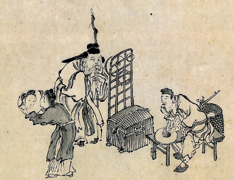Stimulated by a group of optical toys and instruments from Europe, such as eyeglasses, mirrors, camera obscura, magic lanterns, telescopes, and kaleidoscopes, the Jingjing lingchi is a very unique Chinese book on optics in five volumes completed by Zheng Fuguang 鄭復光 (1780–ca.1862) between 1819 and 1846, before the arrival of modern optics in China. Previous studies of the book have focused on demonstrating the scientificity of the concepts and theory adopted by its author, leaving a more interesting problem untreated: how the book and its conceptual basis was constructed. In fact, the book provides us with a very good but extremely rare example of how a Chinese mathematician in the early nineteenth century tried to construct a theory of optics by combining craft knowledge, experimentation, and mathematical methods, how he tried to create new knowledge on the basis of a scholarly appropriation of craftsmen’s know how in both inter- and intracultural dimensions, as well as how optical devices as exotic commodities were translated to objects of knowledge in a context of Confucian culture.
This project provided a systematic analysis of the book and one of its early drafts preserved in the Anhui Provincial Museum. Emphasis was on the roles played by craft knowledge and experimentation in Zheng Fuguang’s theory construction. The kind of knowledge Zheng Fuguang collected from craftsmen was discussed, as well as the kind of transmission network he relied on, how he obtained necessary information through drawings and model-disassembly, the features and purpose of his experiments, and how he put all of this together and formed his own theory. Some of his experiments were reconstructed to test the process of his theory building. Finally, the issue of the effectiveness of his algorithms for optical calculations was addressed.

